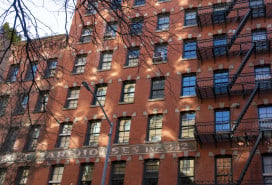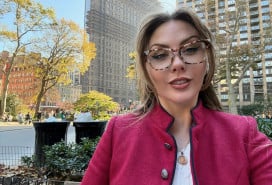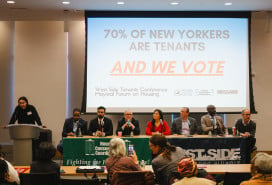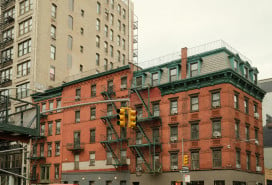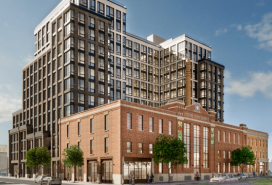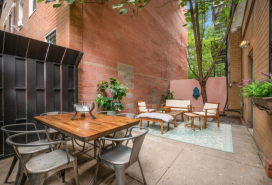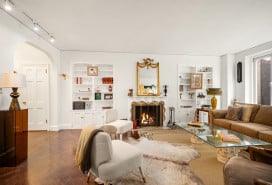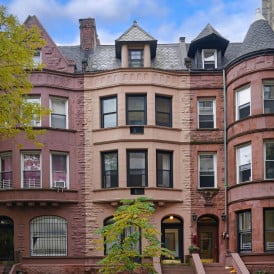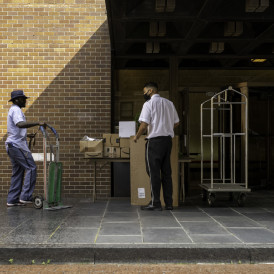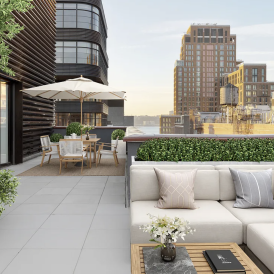As transient renters move in, one Tribeca photog snaps portraits of her long-time neighbors
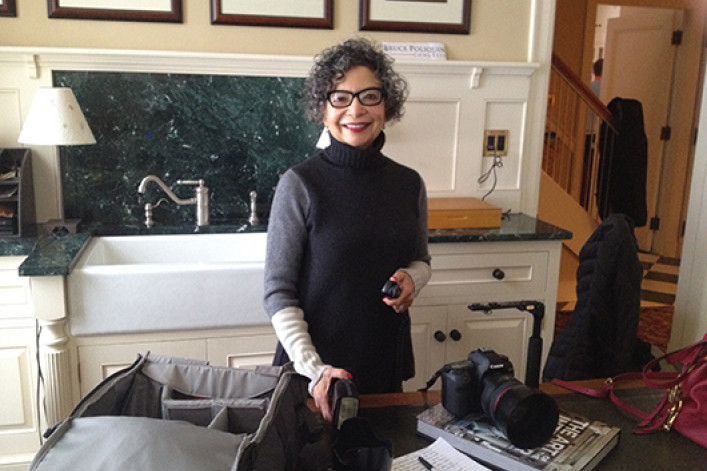
Photographer Susan Rosenberg Jones is one of the few tenants who still lives in the Independence Plaza, a trio of identical brick buildings that have been fixtures of the Tribeca skyline since the 1970s. Originally built for middle-income families under the Mitchell-Lama affordable housing program, the structures now house a mix of market-rate and affordable tenants.
Rosenberg Jones, who paid $700 a month when she moved into the complex in 1984, turned her lens on her neighbors in 2011, snapping shots of the homes of people she'd lived next to for decades. Still in the midst of photographing, she says she hopes to exhibit the work one day or maybe publish a book. Below, she lets us in on the difference between affordable and market-rate renters, plus the benefits of staying in the same apartment for 30 years.

Rosenberg Jones has lived in the same Tribeca apartment since 1984. Above, fellow Independence Plaza resident Deborah Thomas (Photo credit: Susan Rosenberg Jones)
Why did you start this project?
I'm fascinated by the "nests" that people create for themselves, especially in small spaces. After photographing a few households, I narrowed my focus to the long-term tenants of Independence Plaza North, people who've lived here since before 2004, when the complex was removed from the Mitchell-Lama program.
What have you learned about your neighbors?
That the sense of community we share is very important to all of them. What is it like to live in the same building for 30 years? It's wonderful. It's a shared experience of rootedness, security, and solidarity. It's nice to feel at home in the big city.

Above, Independence Plaza resident Malcah Zeldis (Photo credit: Susan Rosenberg Jones)
What was the most surprising thing you saw in a neighbor's apartment?
The apartments have as much variety in decor as do the tenants. Some tenants have Minimalist decor, and others are a tad kitschy. Nothing prepared me for this, though. I was taken by surprise when I went into a tenant's bathroom and saw that the toilet seat had the face of a lion on it. The tenant told me that she'd bought it on eBay.
How do the former Mitchell-Lama tenants differ from the market-rate tenants, if at all?
I think the difference is in expectations. The Mitchell-Lama tenants moved in and expected to stay. New York used to be a city of lifelong renters. The market-rate tenants are more transient; their expectations are to stay awhile until the next move, most likely to buy a piece of real estate.
What's changed since the building left the program?
There have been obvious physical changes to the building since 2004, to accommodate the new tenants: brighter hallways, sleeker looking lobby, and the latest—doormen that hold the outside door for you as you enter or exit. Otherwise, people still get to know their neighbors. Tenants of all stripes, older and newer, make small talk in the elevators, much as we've always done. We like to know the new people on our floors. And we hope that they're interested in getting to know us as well.

Above, Independence Plaza resident Anita King (Photo credit: Susan Rosenberg Jones)
Is neighborhood change good or bad?
It's both. When I moved here in 1984, the Tribeca community consisted of loft dwellers and [Independence Plaza] residents. The loft dwellers were unpretentious and we all formed friendships, which have lasted to this day. There were some small mom-and-pop businesses which are mostly gone. On the other hand, we now have more services: Whole Foods, diverse restaurant choices, more parks and public recreation spaces. But I do miss Creative Time's Art on the Beach at the former Battery Park City landfill!
You've said that New York has lost its flavor. What would the new wave of "ritzy" Tribeca residents think of that?
I am sure that some of the new wave who've moved here from elsewhere have no idea of the difference, and probably don't care. Tribeca is a great place to live. Those ritzy Tribecans who were raised in the city, however, I'm sure that they must marvel at the changes. Perhaps they wish, just a little bit, that their neighborhood were a bit more colorful. If they were raised in the city, I like to think that they miss the diversity.
Will you ever move?
I have no intentions of moving. I love it here.
Related:
Squeezing a family into 450 square feet inspired a Brooklyn photog's voyeuristic portrait series
I'm a subsidized renter, and a "poor door" may be the last straw
New Yorkers' dinner rituals are lonely but strangely beautiful


